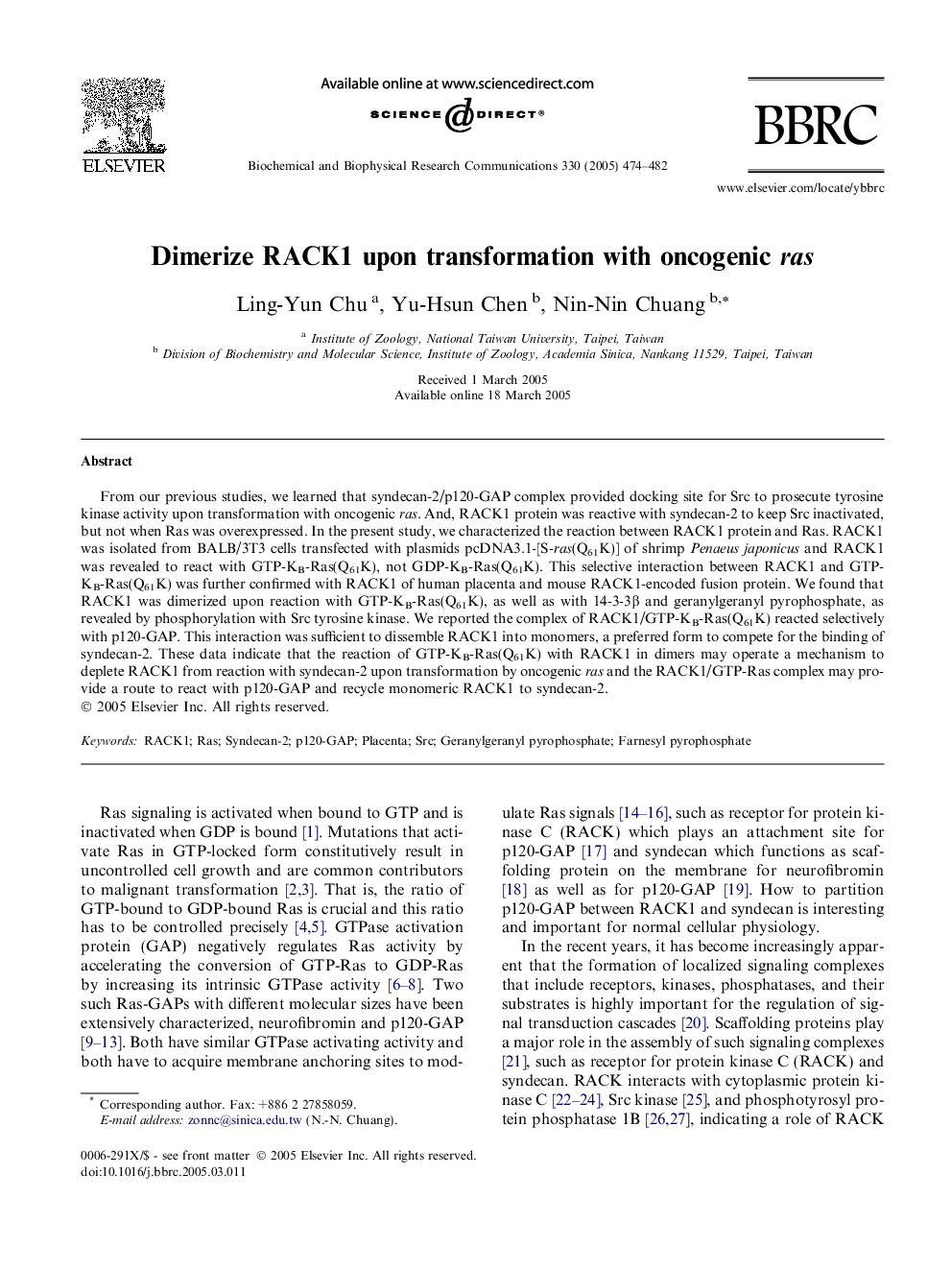| Article ID | Journal | Published Year | Pages | File Type |
|---|---|---|---|---|
| 10770115 | Biochemical and Biophysical Research Communications | 2005 | 9 Pages |
Abstract
From our previous studies, we learned that syndecan-2/p120-GAP complex provided docking site for Src to prosecute tyrosine kinase activity upon transformation with oncogenic ras. And, RACK1 protein was reactive with syndecan-2 to keep Src inactivated, but not when Ras was overexpressed. In the present study, we characterized the reaction between RACK1 protein and Ras. RACK1 was isolated from BALB/3T3 cells transfected with plasmids pcDNA3.1-[S-ras(Q61K)] of shrimp Penaeus japonicus and RACK1 was revealed to react with GTP-KB-Ras(Q61K), not GDP-KB-Ras(Q61K). This selective interaction between RACK1 and GTP-KB-Ras(Q61K) was further confirmed with RACK1 of human placenta and mouse RACK1-encoded fusion protein. We found that RACK1 was dimerized upon reaction with GTP-KB-Ras(Q61K), as well as with 14-3-3β and geranylgeranyl pyrophosphate, as revealed by phosphorylation with Src tyrosine kinase. We reported the complex of RACK1/GTP-KB-Ras(Q61K) reacted selectively with p120-GAP. This interaction was sufficient to dissemble RACK1 into monomers, a preferred form to compete for the binding of syndecan-2. These data indicate that the reaction of GTP-KB-Ras(Q61K) with RACK1 in dimers may operate a mechanism to deplete RACK1 from reaction with syndecan-2 upon transformation by oncogenic ras and the RACK1/GTP-Ras complex may provide a route to react with p120-GAP and recycle monomeric RACK1 to syndecan-2.
Related Topics
Life Sciences
Biochemistry, Genetics and Molecular Biology
Biochemistry
Authors
Ling-Yun Chu, Yu-Hsun Chen, Nin-Nin Chuang,
